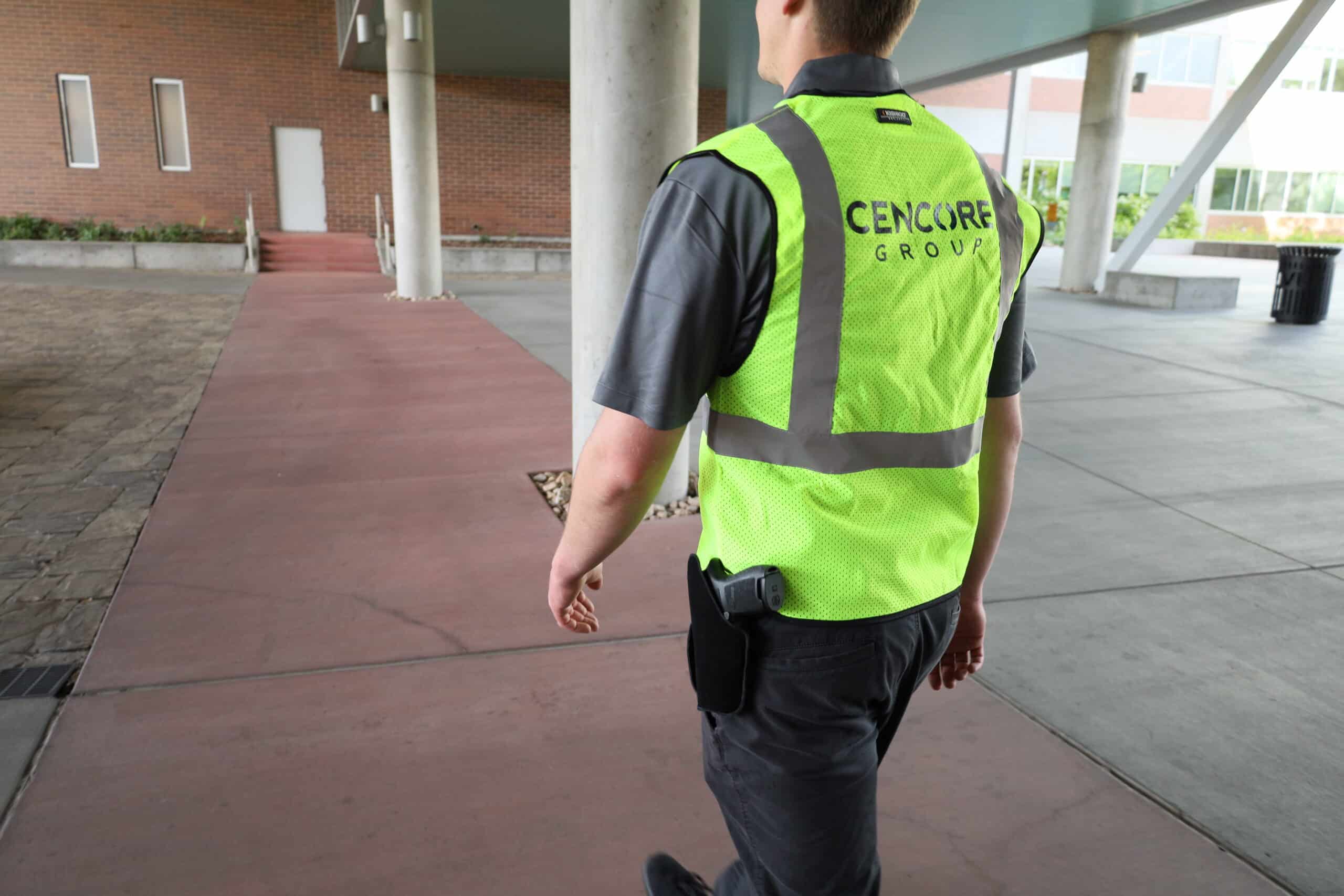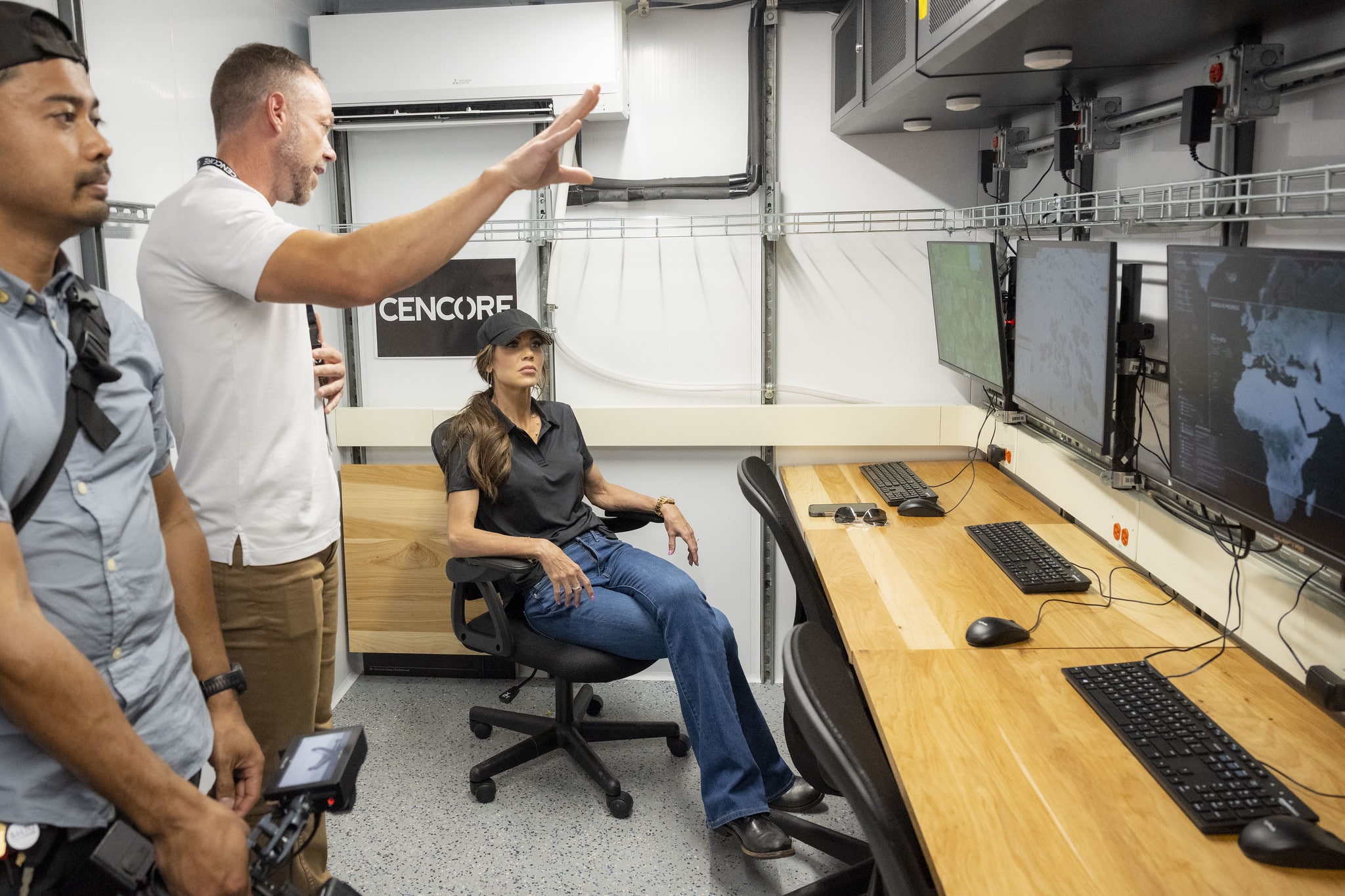Defense and intelligence procurement leaders are facing a perfect storm as ICD-705 compliance mandates loom with hard 2025 deadlines. Three critical challenges—TEMPEST’s technical complexity, severely compressed timelines, and restrictive space limitations—are converging to threaten SCIF accreditation across facilities nationwide. With budget planning requirements extending through 2028 and no clear path to compliance, the stakes couldn’t be higher. Failure means more than just missed deadlines—it creates security vulnerabilities that directly impacts the ability to communicate securely and therefore mission success because, in today’s contested environments, no comms means no kill chain. That’s where CenCore comes in.
CenCore is a defense product and service provider bringing special mission capabilities to our customers through personnel, platforms, and proximity. We build mobile SCIFs and Data Centers that secure the comms and classified information, to enable the chain. Read on to discover how CenCore is currently proving innovative solutions to protect your organization’s facilities and organizational security.
Apocalyptic Warnings Meet Modern Mandates
The Four Horsemen of the Apocalypse brought doom in ancient texts. Today, three new horsemen threaten your sensitive compartmented information facilities. They arrived with the new ICD-705 compliance memorandum. This mandate requires you to complete inventories, risk assessments, and Plans of Action and Milestones (POAMs) by 2025. Your budget planning must also extend through 2028. This creates three immediate threats to your compliance.
Horseman #1 – TEMPEST Compliance in SCIFs
Why TEMPEST Expertise is Scarce
TEMPEST standards don’t spread disease like an apocalyptic Plague. They spread technical complexity instead. TEMPEST standards protect against electronic emanations and demand specialized knowledge for proper implementation. The memorandum itself admits “there is very little published guidance on TEMPEST.” It requires “in-depth ICD 705 and TEMPEST subject matter expertise” to score non-compliant SCIFs. This expertise is both rare and expensive, as proven by the complex Risk Assessment Table in Appendix A. TEMPEST experts have become as valuable as they are scarce, which leaves many of your facilities vulnerable to non-compliance.
Many existing structures were not built with TEMPEST in mind, requiring costly upgrades or full redesigns to meet TEMPEST countermeasures and related SCIF shielding specifications.
Horseman #2 – Tight SCIF Timelines and 2025 Deadlines
Why Traditional SCIF Timelines Don’t Work Anymore
Apocalyptic tales warned of famine that consumed resources. Time consumes your compliance window just as ruthlessly. The clock ticks relentlessly toward your 2025 deadline while the POAM Template in Appendix B demands “good faith” timeline estimates. Additionally, you can’t provide accurate timelines until you complete a Gap Analysis. The problem is, traditional SCIF construction or upgrades take months or years which affects cost and accreditation. These factors and extra costs must be considered in the budgets through 2028. All of this creates both immediate pressure and long-term management challenges and frankly… time is running out.
Every delayed assessment or underestimated retrofit introduces risk to classified operations and extends exposure to potential threats. Working with your cognizant security authority early in the process can reduce rework and streamline approval cycles.
Horseman #3 – Space Limitations in SCIF Construction
Why Existing Facilities Fall Short
War battles for territory in apocalyptic scenarios. Your battle is for physical space in existing facilities. The “Concept of Operations” requirement forces you to confront spatial limitations, while the Gap Analysis will reveal physical constraints you can’t overcome. Additionally, real estate costs continue to rise around defense and intelligence hubs, while more specifically, SCIF requirements severely limit viable locations for SCIF construction. This creates a perfect storm of space constraints and skyrocketing costs that many organizations simply lack the physical space to reach compliance standards.
Even where there is space, reworking floor plans to meet security in depth principles or to isolate the SCIF perimeter becomes infeasible for many existing facilities.
Your Shield Against the Horsemen: CenCore Secure Units
You need protection from these three threats… CenCore Group offers this protection through CenCore Secure Units (CSUs). Here’s how…
Conquering TEMPEST – Using Modular SCIFs to Solve the Space Challenge
CSUs arrive with built-in TEMPEST compliance. This eliminates retrofitting existing structures and removes the need for scarce specialists. Our units incorporate proper shielding from the start. They meet or exceed all ICD705 and TEMPEST security requirements. This built in compliance solves “the larger challenge” the memorandum identifies. Ultimately, you gain access to pre-engineered solutions from qualified TEMPEST experts.
The modular construction also prevents signal leakage, helping protect national security information from interception during transmission and processing.
Mastering Time
Traditional SCIFs require months or years to build. CSUs offer rapid deployment instead. They will be installed in order to achieve accreditation in a fraction of the time. This enables realistic “good faith” estimates in your POAMs and provides start and completion dates that meet expectations. This predictable schedule allows accurate budgetary planning through 2028 so you can meet deadlines without compromising security measures. CSUs are designed to support both planning and execution phases required by an accrediting official during the ICD-705 process.
Optimizing Space
CSUs provide self-contained secure physical environments. They don’t require extensive facility modifications. Their modular design fits into your existing locations—from warehouses to field installations. This maximizes your existing space without extensive renovations. That way, your Gap Analysis can focus on technical requirements rather than spatial constraints. Both assessment and implementation become simpler so you can solve the space problem without new construction. Each CSU functions as a fully self-contained, secure facility ready to support operations without relying on external modifications.
CenCore also supports deployments where space must be shared across multiple programs or where classified material and systems require strict separation by compartment.
Beyond Compliance: S5 Mission Enhancement
CSUs deliver more than just compliance. Here are our “S5” Platform Core Capabilities, where the whole is indeed greater than the sum of its parts:
SECURE ACCREDITATION
Both TSCIF and Special Access Program Facility (SAPF) accreditation provide maximum mission flexibility. Supports alignment with intelligence community directive guidance for modern SCIF operations.
SCALABLE Secure MANUFACTURING:
Our designs incorporate built-in power, cooling, and networking capabilities, offering turn-key solutions that are fully configurable to meet client specifications. Our state-of-the-art production facility spans 18,000 square feet and is fully equipped with 11-40′ production lanes, 120-ton fixed crane capacity, including a combi lift, and 200,000 square feet of additional fabrication space for steel, HVAC, electrical and other solutions in our manufacturing partner’s other facilities.
SYSTEM AGNOSTIC:
Tech-Agnostic Platforms provide support for diverse technologies and enable seamless integration with existing infrastructure. CJADC2 and JFN Support for legacy and modern systems integration enhances battlefield coordination.
SAFETY FROM EXPOSURE:
Protection for personnel, classified material and sensitive compartmented information in contested environments. Secure environments at the tactical edge accelerate intelligence delivery to decision-makers. In essence, the CSUs provide Edge Computing to enable an AI powered future.
SPEED OF COMPLETION:
Quickly resume your SCI operations and control the flow of sensitive information through our mobile and compartmentalized infrastructures in months instead of years.
Turning Compliance Risk into Operational Opportunity
The ICD 705 memorandum created unprecedented challenges. CenCore Secure Units transform these challenges into opportunities.
With CSUs, you can:
• Conduct more accurate risk assessments with built-in compliance
• Develop realistic POAMs with achievable timelines
• Address Gap Analysis findings efficiently
• Reduce budgetary impact through 2028
• Meet 2025 deadlines while positioning for long-term compliance
These three horsemen—TEMPEST, Time, and Space—don’t need to pose a threat to your mission. CenCore offers you a shield to protect against them. Our CSUs provide not just compliance but capability and mission enhancement so that when the regulatory SCIF-Pocalypse arrives, you’ll be ready, and your accreditation will be on time and on budget.
CenCore Group: Enabling an AI-Powered Future Through Personnel, Platforms, and Proximity.
Ready for a Consult?
If you’re exploring secure space solutions, fill out the form with a few details — we’ll follow up to start the conversation.




